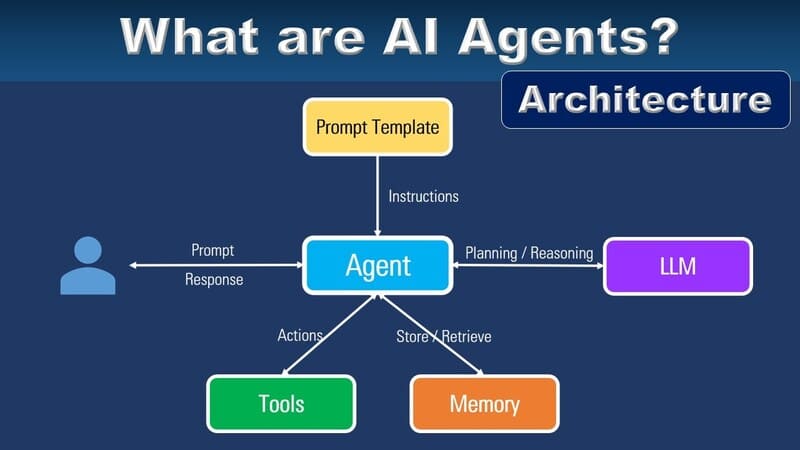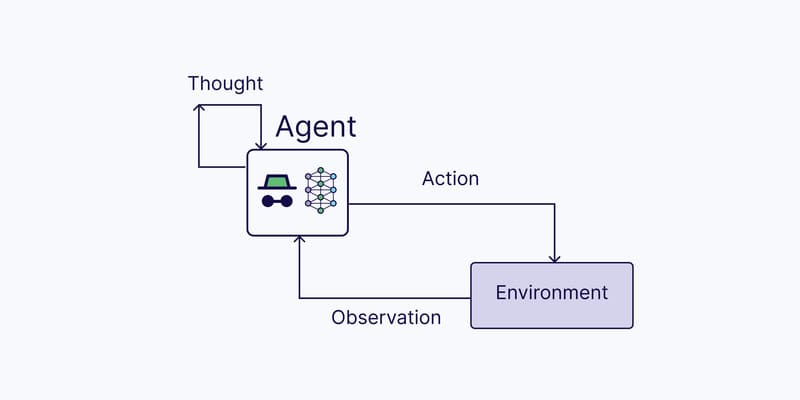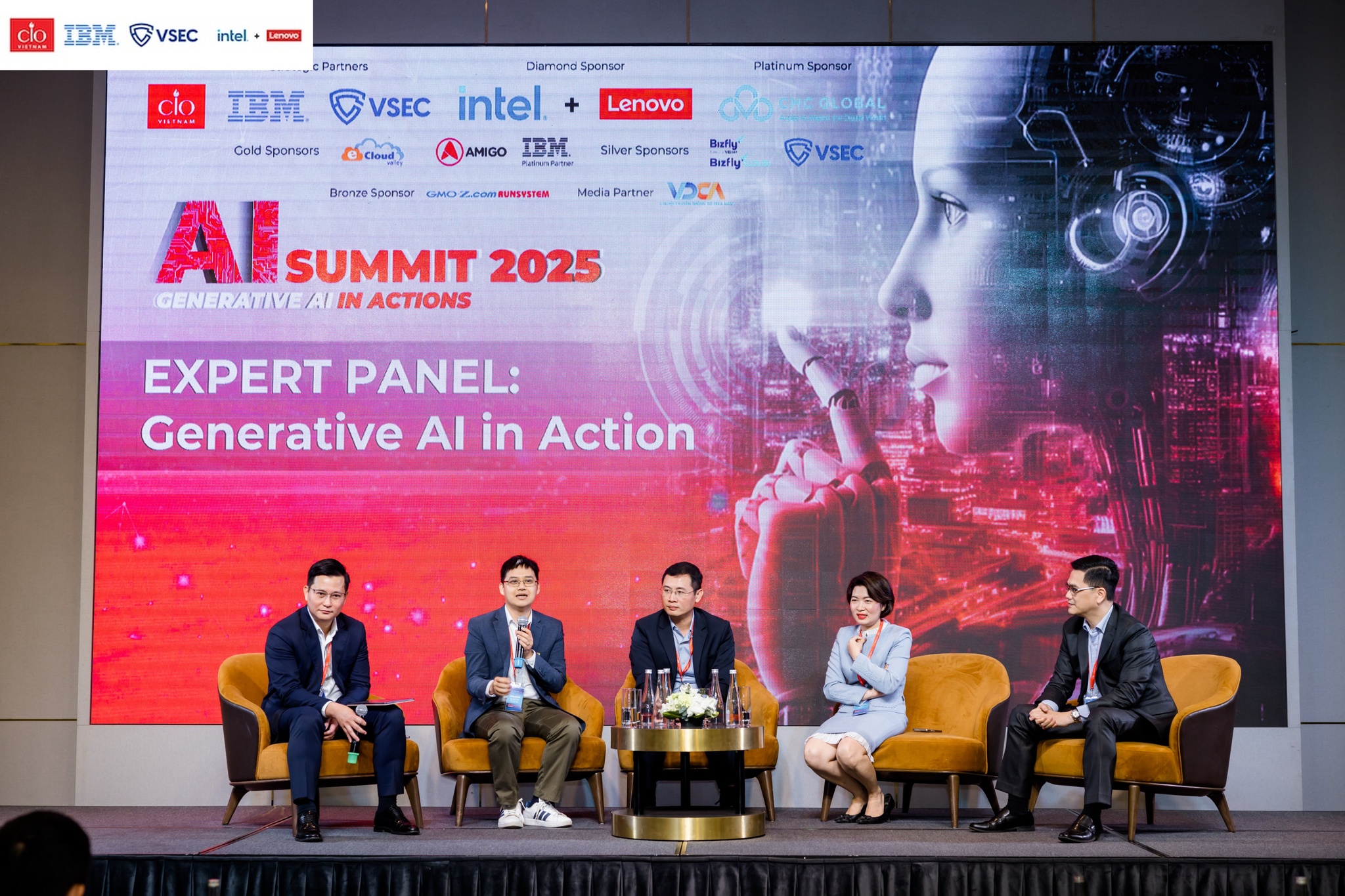The combination of artificial intelligence and finance has created intelligent systems that can analyze, learn and make decisions automatically. According to McKinsey, applying AI in finance can help businesses improve operational efficiency by up to 20%, while reducing operating costs by 10-25% thanks to the ability to accurately automate complex financial processes that are prone to errors when performed manually. In the following article, FPT.AI will analyze in detail the current situation of AI application in finance and the challenges when deploying this technology in Vietnam.
TOP 7 leading applications of AI in finance
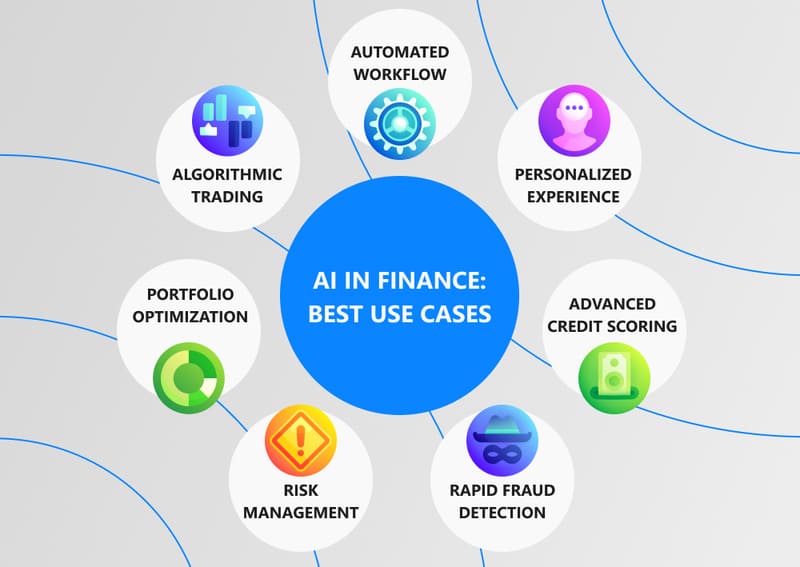
Data analysis and forecasting
AI in finance helps businesses process large volumes of data from financial statements, cash flow reports and economic indicators, supporting quick decision making. According to Deloitte, AI reduces data processing time by up to 80% compared to manual methods. JP Morgan has applied AI to analyze millions of transactions every day, helping to identify investment opportunities and better manage risks. According to KPMG, businesses applying AI to financial reporting reduce data processing time by 70% and increase accuracy by 90%.
AI also supports trend forecasting and long-term financial planning based on historical and real-time data analysis. According to PwC, businesses applying AI in financial forecasting can improve performance by 20-30%, increase forecasting efficiency by up to 76% and reduce data processing time by 50%. Microsoft has optimized the financial forecasting process with AI, cutting budget planning time by half.
In addition, AI technology in finance, such as Machine Learning, can also analyze unstructured data from social networks and news to assess market sentiment, predict future cash flows, support liquidity management and investor decisions. According to Forbes Insights (2023), AI forecasts financial trends and predicts customer behavior with up to 85% accuracy.
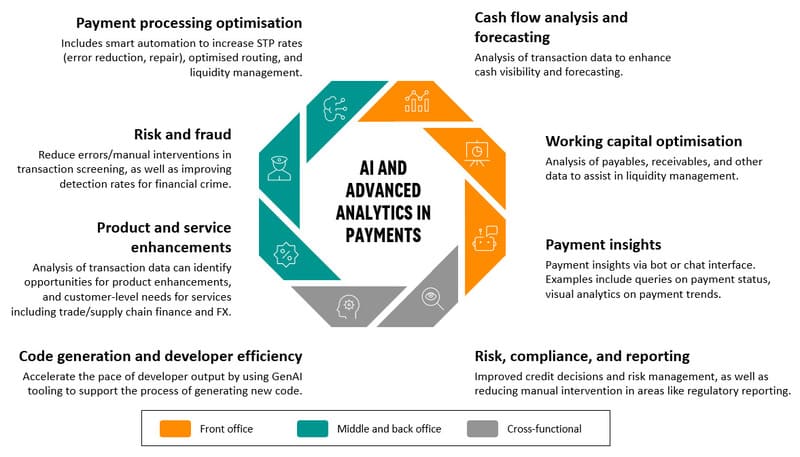
Risk Management
AI in finance helps businesses identify potential risks through analyzing historical data, market data, online behavior, customer social media activities and economic models. According to McKinsey, using AI to manage financial risks helps reduce 10-15% of losses due to unforeseen incidents. HSBC has applied AI to improve credit risk assessment and customer creditworthiness, reducing the bad debt ratio from 8% to 5% in two years.
AI assesses credit profiles based on behavioral data and financial history, helping to make sound credit decisions. According to Accenture, banks applying AI to credit analysis have reduced bad debt rates by 20-30%. American Express uses AI to predict consumer behavior and payment ability, thereby optimizing the credit card approval process.
AI also speeds up market analysis and risk calculation for trading positions in securities and foreign currencies, ensuring investors do not violate international regulations, such as the Fundamental Rating Standard for Trading Book (FRTB). According to PwC (2023), banks aim to reduce cost-to-income ratio (74%), customer acquisition costs (71%) and revenue growth (68%) through digitization and AI application in risk management.

Fraud Detection
AI in finance is capable of analyzing millions of transactions to detect and flag unusual behavior, such as illegal transfers, credit card fraud, and bogus loan or insurance claims. According to Forbes, AI improves fraud detection by up to 95% compared to traditional systems. PayPal has used AI to analyze transaction behavior, reducing online fraud by 33%.
Most of the AI venture capital in the banking industry is used for fraud prevention and security. AI systems monitor financial transactions in real time and detect abnormalities compared to normal spending habits, helping banks and financial institutions respond promptly to fraudsters.
Many large banks in Vietnam such as VPBank, Techcombank, VIB and ACB have applied AI in finance for security and fraud prevention purposes. AI analyzes huge amounts of data and connects with new information sources to identify unusual transactions. AI technology in anti-money laundering (AML) analyzes transaction patterns in near real-time, identifies suspicious activity, and alerts promptly.
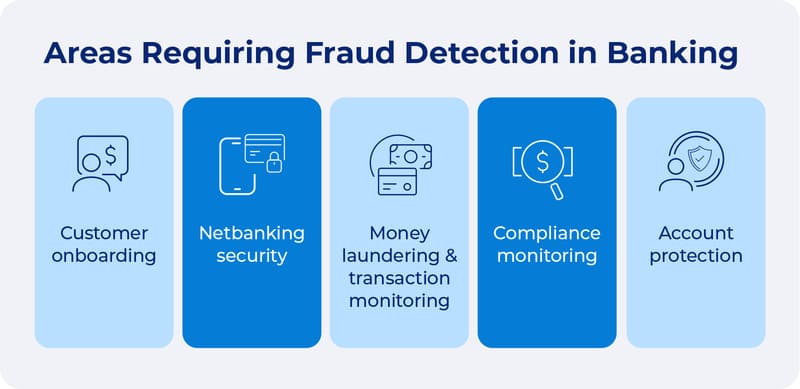
Process Automation
When combined with OCR (Optical Character Recognition), AI applications in finance can automatically enter and extract data from invoices and documents. According to Gartner, AI applications in accounting reduce data entry errors by 90% compared to manual methods. Siemens has deployed AI to automate the process of checking financial documents and entering invoices, reducing processing time by 30% and shortening the time to prepare global financial reports from two weeks to three days. Deloitte said that businesses applying AI in finance have reduced human resources costs by 30% thanks to automating data entry and reconciliation.
RPA (Robotic Process Automation), AI software with ML (Machine Learning) capabilities, is widely applied to automate large volumes of repetitive tasks and processes. According to Shojai (2017), RPA in banking helps reduce processing time by 40%, eliminate human errors and increase employee focus on customer activities by 45%.
VietinBank has applied RPA to the process of lending against savings books, automatically processing about 3,000 applications per month, saving up to 65% of operating time. HDBank deployed RPA for 6 processes: approving regular money transfer transactions (CITAD); resolving questions from the call center; cross-checking employee timekeeping data; checking money transfer transactions; correcting data errors and automatically processing input data. Thanks to RPA, HDBank reduced service processing time by 70%, increased transaction processing speed by 30 times (from 3 minutes to 5 seconds), saved 70% of human resources and increased customer satisfaction by 80%.
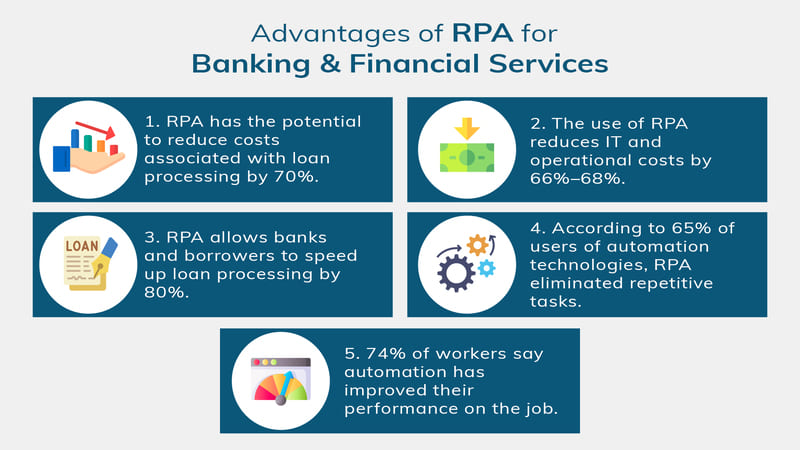
Investment and Asset Management
AI in finance analyzes market fluctuations, financial situations, and business goals of enterprises to propose investment strategies. According to BlackRock, applying AI to portfolio management can increase profitability by 15-20% compared to traditional methods. Bridgewater Associates uses AI to optimize investment portfolios, increase profitability, and effectively manage risks.
Robot Advisors are AI applications that provide automated investment advice based on customers’ personal data and financial goals, managing more than $1.4 trillion in assets by 2023 (according to Statista). Wealthfront and Betterment are two leading Robot Advisors platforms, helping to optimize investment strategies at low cost but with high efficiency.
Algorithmic trading is growing strongly thanks to AI and machine learning. AI analyzes millions of data points in real time and creates insights that conventional statistical models cannot. AI systems continuously adjust to changing trading environments, helping to reduce risks and improve decision-making.
The cryptocurrency market also benefits from AI. AI-based predictive analytics helps forecast market trends, ensure transaction integrity, and support investors in making informed decisions.
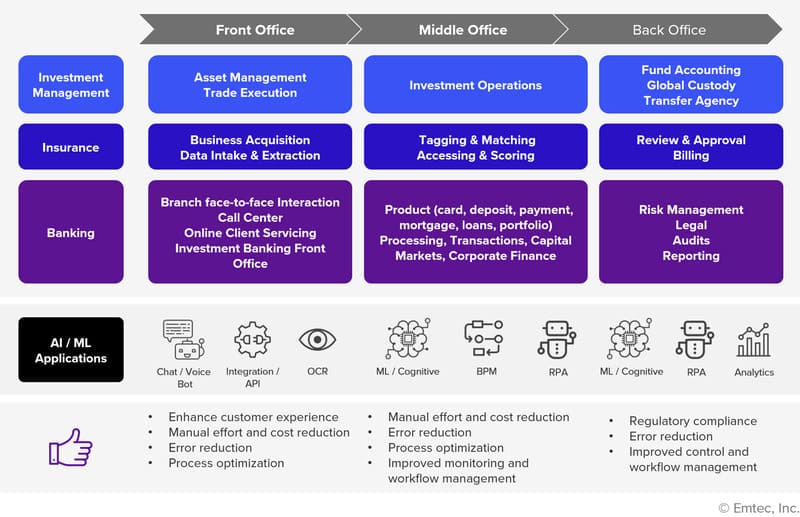
Customer support and interaction
Chatbots and virtual assistants are very popular AI applications in finance, helping organizations operate 24/7, answer frequently asked questions, handle basic requests, scale services, and reduce staff workload.
Vietcombank uses FPT.AI’s VCB Digibot for 24/7 customer care, accurately answering questions about cards, loans, interest rates, promotions, networks, and exchange rates. With powerful Vietnamese natural language processing and sentiment analysis capabilities, this AI Chatbot can analyze text or speech, recognize intent, understand context, respond naturally, accurately, and personalize marketing to customers anytime, anywhere.
Nam A Bank is the first bank to apply OPBA robot to advise customers, helping to reduce waiting time or queuing at the counter. The bank also applies VTM OPBA, allowing customers to withdraw money, print, view sub-books, and issue cards with 24/7 support via video.
According to a Finastra survey, 45% of participants in Vietnam consider improving customer service with AI as a key goal. In the era of digital transformation, customer satisfaction through quality service creates an important competitive advantage.
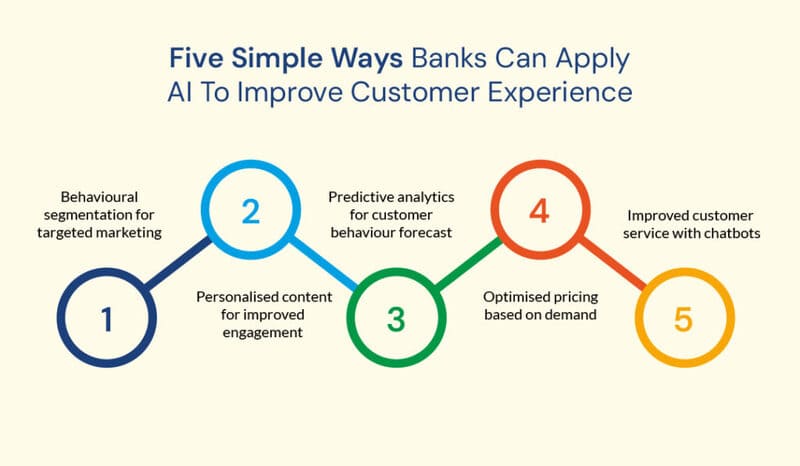
Identification and Security
AI significantly improves data security in financial technology through security layers that are harder for hackers to exploit than conventional passwords such as voice, face and fingerprint recognition. Banks and Fintech companies are increasingly using AI chatbots to help customers reset passwords or grant additional access.
VietinBank uses FaceID recognition kiosks, saving 30% of transaction processing time. TPBank integrates facial recognition technology into the LiveBank system, analyzing 128 criteria to identify users without identification documents. This system uses Depth Camera with Liveness check function (ensures real people), projects and analyzes tens of thousands of photo dots to create a facial depth map, identify facial angles, identify eye shape and position, and detect unusual movements in videos.
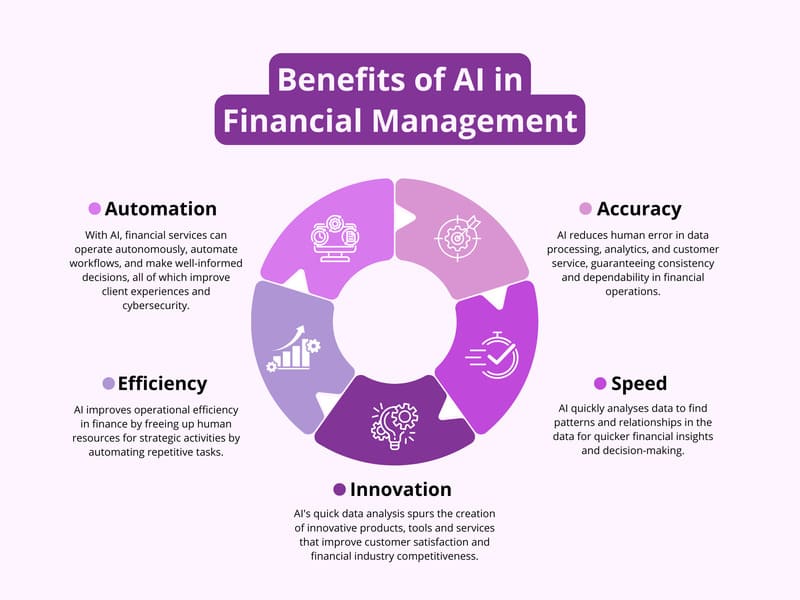
FAQs about AI in Finance
What is AI in Finance?
AI in finance is the combination of computer science and finance, to create intelligent systems that can analyze data in real time, learn and make decisions automatically. This is a technology that helps financial institutions process complex information, recognize patterns, forecast, manage investments, comply with KYC procedures, mitigate risks, detect fraud, anti-money laundering (AML), predict customer behavior and automate service processes, thereby improving efficiency, enhancing cybersecurity and reducing operating costs.
In essence, AI in finance uses complex algorithms and mathematical models to process huge volumes of data from many different sources. These algorithms are capable of learning from data, adjusting and improving accuracy over time without being specifically programmed for each situation. This technology is particularly effective in processing unstructured information such as news, analytical reports or data from social networks.
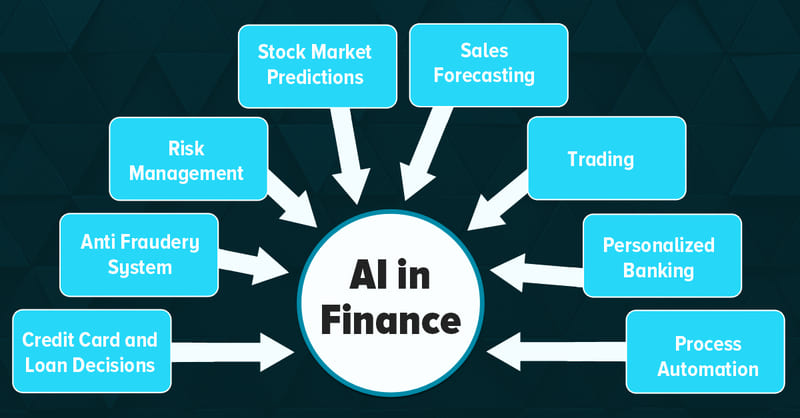
In the modern financial environment, AI acts as a foundational layer to support business decisions. Instead of completely replacing humans, AI in finance enhances the analytical and decision-making capabilities of experts. It helps them process information volumes that exceed the processing capacity of the human brain, while minimizing errors due to fatigue or personal bias.
AI in finance is not just a single tool but a collection of different technologies such as machine learning, deep learning, natural language processing (NLP), large language models (LLM), retrieval reinforcement generation (RAG) and generative artificial intelligence (Generative AI). Each of these technologies addresses specific needs in the financial process, from data analysis to customer interaction and decision support.
With the ability to operate 24/7 and process information at an exceptional speed, AI has become an indispensable technology in the modern financial ecosystem. It brings accuracy, consistency and efficiency to financial processes, helping organizations not only optimize operations but also enhance customer experience through personalized services and quick responses.
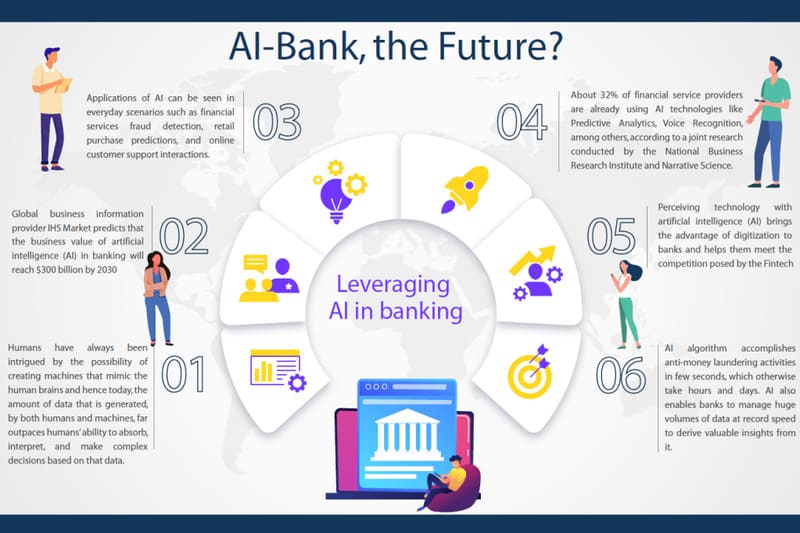
How is AI used in finance?
The financial industry is undergoing a profound revolution thanks to artificial intelligence (AI) technology. According to McKinsey, AI application in finance can help businesses improve operational efficiency by up to 20%, while reducing operating costs by 10-25% thanks to the ability to automate and accurately synchronize complex and error-prone financial processes when performed manually such as invoice processing, accounting, etc.
According to Accenture, by 2023, up to 83% of chief financial officers (CFOs) will invest in AI technology to optimize financial processes to improve efficiency. This investment is not only limited to large financial institutions but also spread to small and medium enterprises, creating a wave of synchronous AI application across the industry.
According to Gartner, by 2025, businesses applying AI to financial management can save up to 40% of operating costs. In Vietnam, according to a survey by Finastra, 94% of financial institutions are very excited about the opportunities that AI brings to the industry. This is demonstrated by the widespread deployment of AI in e-banking and e-wallet applications. The transaction value through mobile payments has now reached billions of USD per day, showing the great potential of integrating AI into smart payment solutions in the future.
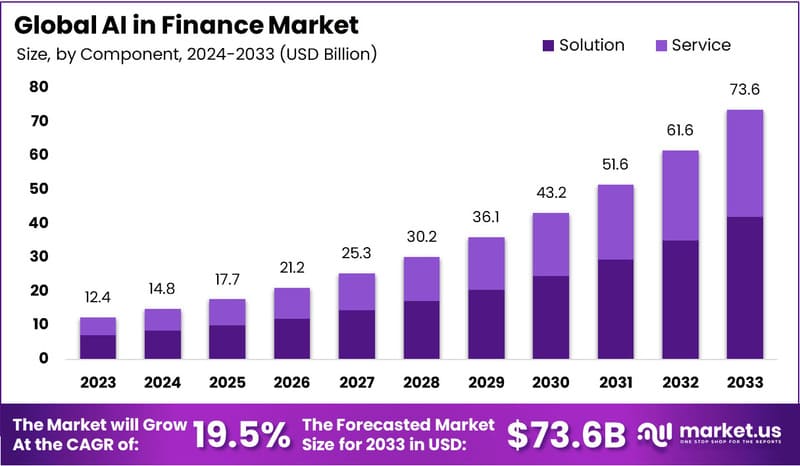
Along with AI applications, the Banking-as-a-Service (BaaS) model is also developing strongly in Vietnam. This is a model that integrates core banking services with products of non-banking businesses, creating conditions for fintech companies to develop new products with higher usability. According to Finastra, 55% of respondents highly appreciate the improvement capacity of BaaS in Vietnam, 7% higher than the global average. Notably, 89% believe that this model is the main tool to create business growth and income, making Vietnam second after Hong Kong in terms of trust in this model.
Another important trend is the integration of ESG (Environmental, Social and Governance) factors into financial operations. In Vietnam, 90% of respondents agree that supporting ESG initiatives is essential for the financial industry. According to PwC Vietnam, financial institutions can raise up to US$1.7 billion through the issuance of green, social and sustainability bonds. At the same time, there is an opportunity to invest up to US$753 billion in capital for Vietnam’s energy transition from 2016-2030, contributing to the goal of zero carbon emissions by 2050.
Challenges in applying AI in finance
Despite its great potential, the implementation of AI in finance still faces many challenges such as high initial investment costs, the ability to integrate with existing systems, security issues and legal compliance. It is estimated that businesses may have to spend about 7-10% of their IT budget on implementing AI in finance in the early stages, a significant number for many organizations.
In addition, with the rapid change in technology, building a legal framework and training employees in digital transformation skills to deal with increasingly sophisticated risks and cybercrimes remains a major challenge. To increase the effectiveness of AI application in finance, Vietnamese joint stock commercial banks need to have a roadmap for investing in core infrastructure and a suitable employee training plan. Coordination between relevant ministries and agencies is also very important in researching, promulgating legal regulations and ensuring security and confidentiality in financial activities.
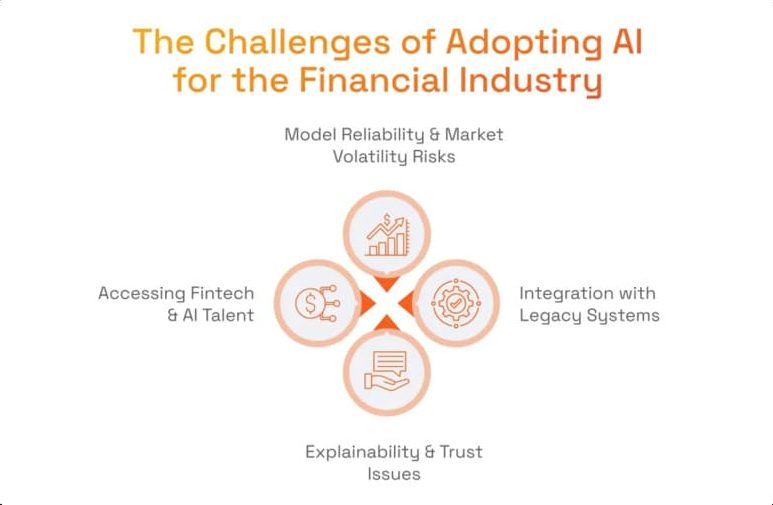
In short, AI in finance is not just a passing trend but has become a key factor helping financial institutions maintain a competitive advantage in the digital age. With the ability to automate processes, analyze data accurately, manage risks effectively and enhance customer experience, AI is opening the door to a smarter, safer and more efficient financial future. However, to fully exploit the potential of AI in finance, organizations need to overcome challenges in investment costs, legal frameworks, cybersecurity and human resource development.








